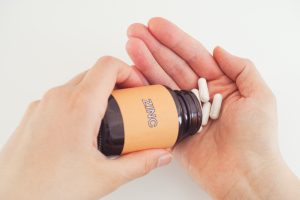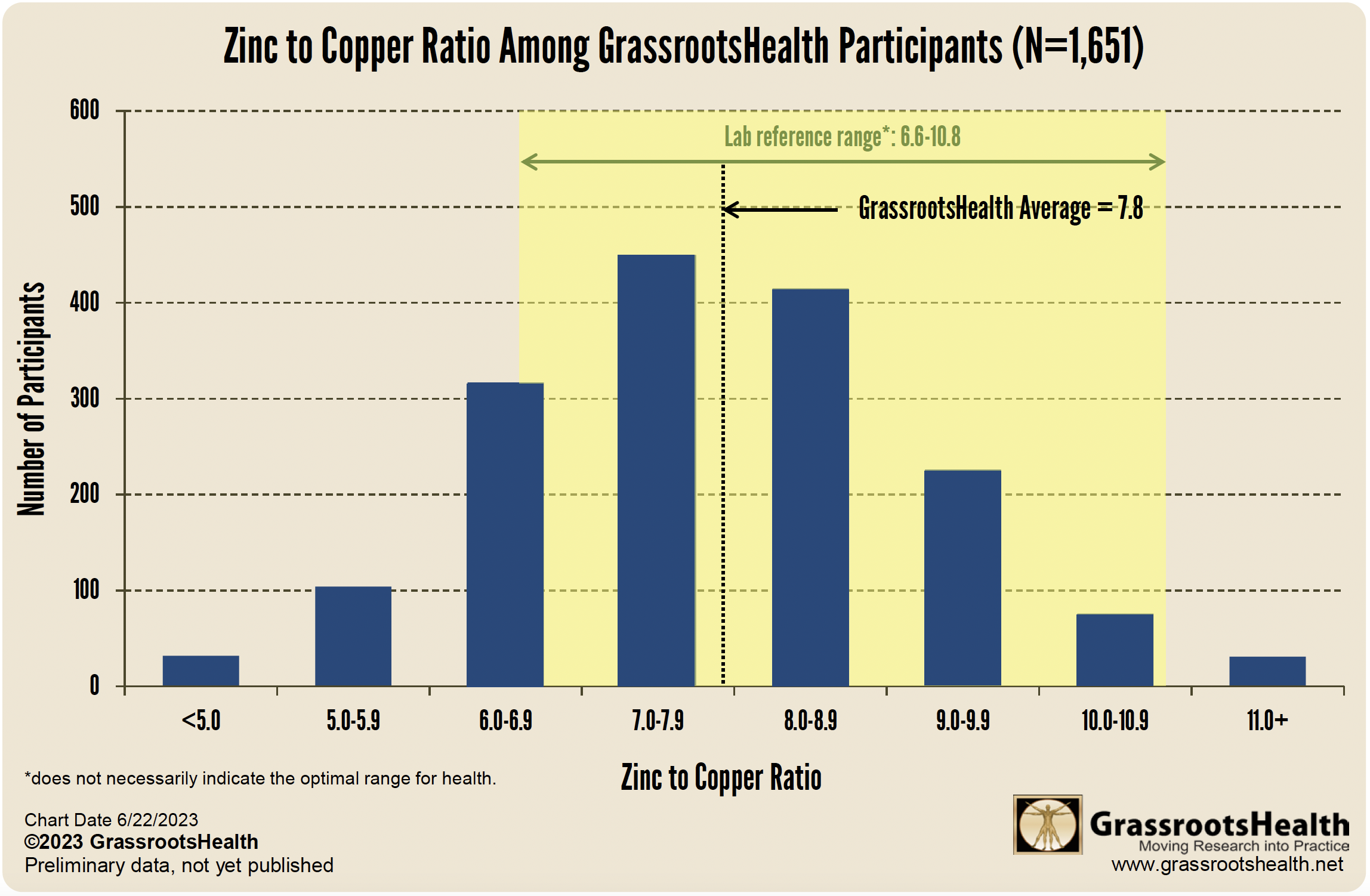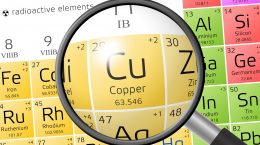Published on December 5, 2023
One of the most common trace metal imbalances is a high copper level with a low zinc level; measuring the Zinc to Copper Ratio can tell you if these two minerals are in balance or not
Key Points
- One of the most common trace mineral imbalances is high copper and low zinc; evidence suggests that this imbalance could contribute to a number of health conditions such as headaches, muscle and joint pain, hyperactivity, premenstrual syndrome, depression, and anxiety
- Too much zinc in the diet (in excess of 15 mg/day) can also lead to a copper deficiency, another reason it is important to look at the zinc to copper ratio (Zn:Cu) to get a better picture of copper status
- Ensure your zinc and copper levels are in balance by measuring to find out your zinc to copper ratio, along with your vitamin D, essential and toxic elements, and other important health measurements
 Zinc and copper are important co-factors for enzymes in the body. Zinc is necessary for growth and development, immune function, bone metabolism, and central nervous system function. Deficiency in zinc can lead to compromised immune function and wound healing, and can also affect taste and smell.
Zinc and copper are important co-factors for enzymes in the body. Zinc is necessary for growth and development, immune function, bone metabolism, and central nervous system function. Deficiency in zinc can lead to compromised immune function and wound healing, and can also affect taste and smell.
Copper is an essential micronutrient, important for immune health and for the normal development of connective tissues, nerve sheath, and bone; it is needed in very small quantities, but when found in greater concentrations than necessary, will become toxic and can lead to liver dysfunction. Symptoms of copper deficiency can include neurological dysfunction and connective tissue abnormalities.
Importance of the Zinc to Copper Ratio
One of the most common trace mineral imbalances is high copper and low zinc. Some evidence suggests that this imbalance could contribute to a number of health conditions such as headaches, muscle and joint pain, hyperactivity, premenstrual syndrome, depression, and anxiety, so it is important to know the ratio between these two essential elements.
Also, too much zinc in the diet (in excess of 15 mg/day) can lead to a copper deficiency, another reason it is important to look at the zinc to copper ratio (Zn:Cu) to get a better picture of copper status.
Zinc to Copper Ratios Among GrassrootsHealth Participants
In the spring of 2019, GrassrootsHealth started offering a zinc to copper ratio test as part of the Elements Panel, which includes testing your vitamin D level along with essential elements magnesium, selenium, zinc, and copper, and toxic heavy metals cadmium, lead, and mercury.
Among the 1,651 participants who had tested their zinc to copper ratio (as of June 2023), the average ratio was 7.8 which falls within the lab reference range (6.6-10.8). This average is very close to the average found in our last analysis (completed in 2020) of 7.9. Note that the reference range indicates the range of typical results found in the population the lab serves but does not necessarily indicate the optimal range for health.
The optimal range for the zinc to copper ratio is not known. Your ongoing participation in this project will contribute greatly to knowing what levels are optimal for health. We will continue to track this data and report any results back to you.
Ensure your zinc and copper levels are in balance! Help support your overall health by testing today to find out your level of zinc, copper, vitamin D, and other nutrients and minerals important for a healthy life.
Add the Elements Panel to Your Home Test Kit Here
Test to See if You Are Getting the Right Amounts Vitamin D, Zinc, Copper, and Other Important Nutrients
 Create your custom home test kit to measure your levels at home as part of the D*action project!
Create your custom home test kit to measure your levels at home as part of the D*action project!
With your kit you can measure your:
- Vitamin D
- Magnesium PLUS Essential and Toxic Elements
- Omega-3 Fatty Acids
- hsCRP
- HbA1c
- TSH
- Type 1 Diabetes Autoantibodies
Did you know that each of the above can be measured at home using a simple blood spot test? As part of our ongoing research project, you can order your home blood spot test kit to get your levels, followed by education and steps to take to help you reach your optimal target levels. Start by enrolling and ordering your kit to measure each of the above important markers, and make sure you are getting enough of each to support better mood and wellbeing!
Create your custom home test kit today. Take steps to improve the status of each of these measurements to benefit your overall health. With measurement you can then determine how much is needed and steps to achieve your goals. You can also track your own intakes, symptoms and results to see what works best for YOU.







